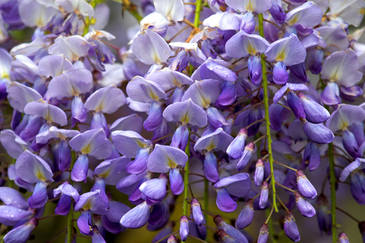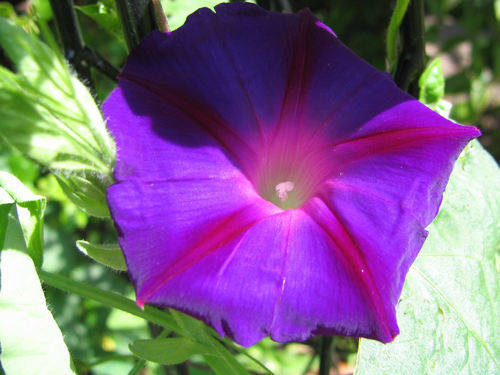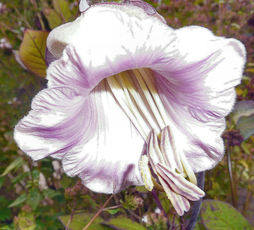![Nigella seeds Nigella seeds]() |
This is the time of year I get seduced by seed packets and have to stop myself buying seeds, which are no longer cheap. Most are around £1.99 and a few packets can quickly add up £10.00 which is fine, in many ways good value for money, but I always end up with way too many seeds and seedlings. This year I am being more mean; try germinating old seed first. Seed packets have a "best before " date but much depends on the type and quality of the seed, and how it's been stored. Some seed just last better than others, and whilst web sites give guidance as to the life span of various seeds, who knows until you try them. If you are sowing early, try germinating a few from an old packet and if nothing happens maybe the seed is passed it's best, but many seeds, if stored somewhere cool, will be viable for several years.
If you do fancy making a start on growing from seed, try first with the large seeds as they are easier to handle and to prick out once germinated. With vegetables, the those most easy to germinate and grow are peas, beans , courgettes, cucumbers, all the large seeds. I do grow flowers from seeds, but really it's only worth from your own seed, so it's free plants, or it's something which you cannot get at the garden centre and is going to add lots of colour and style. Such as Ipomoea (Morning Glory) or Cobaea (cup and saucer) plant images left below. These are fantastic summer annuals (one season only) and both distinct climbers, Cobaea is easier than Ipomoea which is very tender and shrivels, literally, if it gets a chill breeze. There is also the spectacular Amaranthus illustrated is caudatus (love-lies-bleeding) which looks particularly impressive in a hanging basket with all the tassells flowing down. It is easy to germinate and grow and if you are thinking of trying these annuals and want some further advice e mail The Sunday Gardener
If you want to try your hand at sweet peas these are easy to grow from seed, and you can buy on-line distinct colours and also some highly scented varieties. For Advice on how to grow sweet peas from seed.
It is too cold to sow seed now with any confidence as yet, except under glass with additional heat. In previous years I have had enquiries about spindly, not very robust looking seedlings when growing from seed. The main problem, especially if you seed early, is low light levels. Seedlings need light, and pull toward the light. If you are growing on a windowsill it is hard to get good seedlings because the light is only from one direction and even turning the plant regularly doesn't ameliorate the problem. The best seeds, those perfect plants on sale in the garden centres, have been grown in light which is 360 ° so the plant grows evenly. The best place is a greenhouse, or a conservatory can be good, essentially with as much all round light as you can get and that will get the seedlings off to a good start. Early in the year I also use a heated propagator mat to generate additional warmth if seeding into an unheated conservatory or greenhouse. Once germinated and established do not leave too long on the warm mat as again it will not produce study seedlings. Unless you are growing in warm conditions avoid anything which is very tender or cold sensitive, which includes these annual especially the Ipomoea which I would not recommend to seed until at least late April.
|




